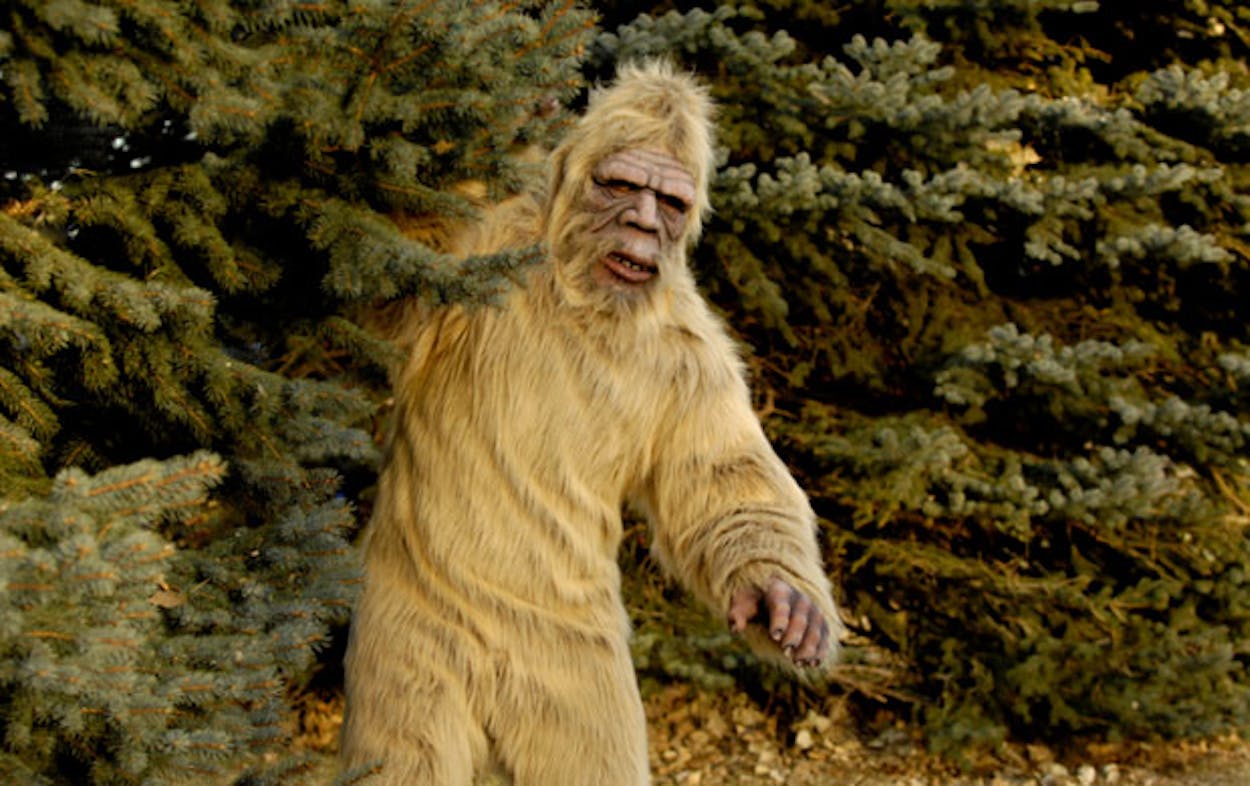Texas is no stranger to Bigfoot sightings, but now the elusive creature is making appearances in places other than the Piney Woods—like in a geneticist’s laboratory. A Nacogdoches-based scientist released a statement November 24 claiming to have successfully sequenced Bigfoot’s DNA.
The statement, published by DNA Diagnostics Inc., reports that a team of scientists has concluded a 5-year study that “confirms the existence of a novel hominin hybrid species, commonly called ‘Bigfoot’ or ‘Sasquatch,’ living in North America.” Melba S. Ketchum, PhD., founder of DNA Diagnostics, led the team of “experts in genetics, forensics, imaging and pathology.”
As Bigfoot believers are something of a fringe group, it is perhaps no surprise that Ketchum’s claim is raising big, hairy eyebrows all over the Internet, especially among science enthusiasts.
As Houston Chronicle science reporter Eric Berger wrote in SciGuy, one of the most questionable elements of Ketchum’s release is that the study’s findings are being broadcast before they have been peer-reviewed or published. “Ketchum is stating a discovery as scientific fact before other scientists have studied her evidence,” wrote Berger. For those familiar with the peer review process, unvetted findings are tantamount to rumor and hearsay or worse: pseudoscience.
Doubtful News, a website devoted to calling pseudoscience into question, is (surprise!) doubtful about Ketchum’s news as well. “We don’t know who the team of scientists is. Melba has been silent. The collected data is suspect, the analysis is suspect, the conclusions are suspect. EVERYTHING is suspect because there is no data for anyone else to examine,” they wrote November 24.
John Hawks, an anthropologist at the University of Wisconsin, was not impressed: “One benefit of the world of genetics as opposed to traditional anthropology: The original sequence data must be made available to the public. No data, no discovery.”
Could there be some other explanation for the purported results besides “the existence of a novel hominin hybrid”? At NeuroLogica Blog, Steven Novella, offered a different hypothesis: “The bottom line is this – human DNA plus some anomalies or unknowns does not equal an impossible human-ape hybrid. It equals human DNA plus some anomalies.”
There’s also another, more basic question that needs to be answered: Even if Ketchum’s team did sequence an unknown genome, what did they test? Did Bigfoot helpfully drop off some hair clippings in their overnight box?
Here is where the story gets weird(er). Supposedly the DNA samples were provided by Robin Lynne-Pfeifer, a 47-year-old resident of Newaygo County, Michigan. In October 2011, she told Eric Niiler of Discovery News that she has been feeding and interacting with a family of ten Bigfoot-like creatures in the woods near her home for the past two years. “They get fish every day, a bucket of fruit, a bucket of dry dog food. . . . Their favorite thing is blueberry bagels,” she said.
And some conflicts of interest start to emerge, if you look closely: not only is Lynne-Pfeifer the Bigfoot insider for DNA Diagnostics, but, according to the press release, she is also their press agent. Curiouser and curiouser.
Jeff Meldrum, professor of anatomy and anthropology at Idaho State University, has serious doubts about Lynne-Pfeifer’s claims of kinship with the missing link. “There’s no substance to any of her claims,” Meldrum told Discovery News. “If there were 10 to 12 around her home, she should be opening up a museum with all the artifacts.” And Meldrum, an expert in the evolution of early hominids, has been investigating claims of Yeti sightings on the other side of the world. He recently attended a meeting of Bigfoot believers in the Kemerovo region of Russia.
Ketchum’s press release shifts gears at the end. It states that Bigfoots are so close to humans genetically that, “government at all levels must recognize them as an indigenous people and immediately protect their human and Constitutional rights.” TM Daily Post can’t help but wonder, is Dr. Ketchum more interested in being a scientist or a public crusader fighting for the civil liberties of Sasquatch-Americans?






